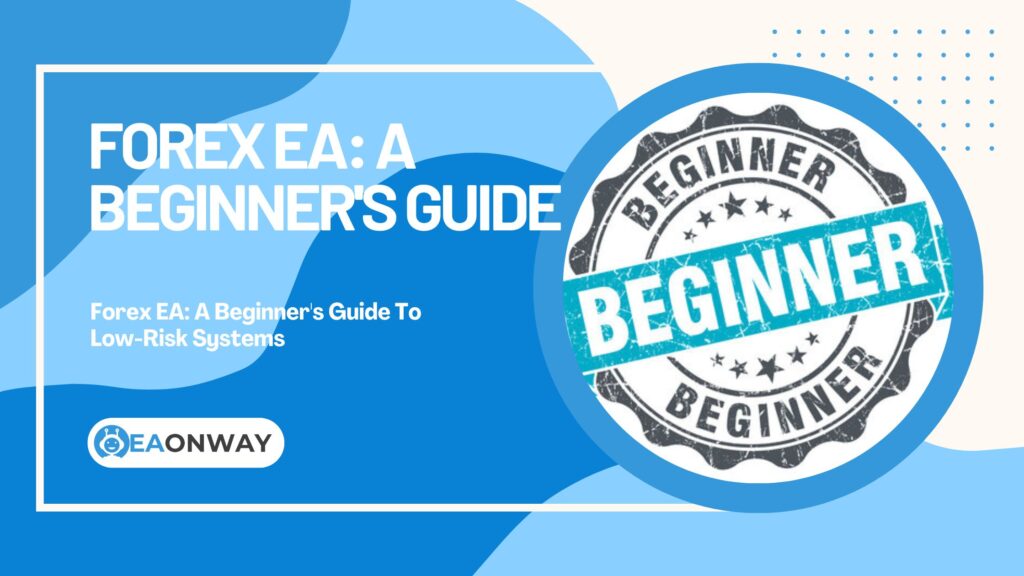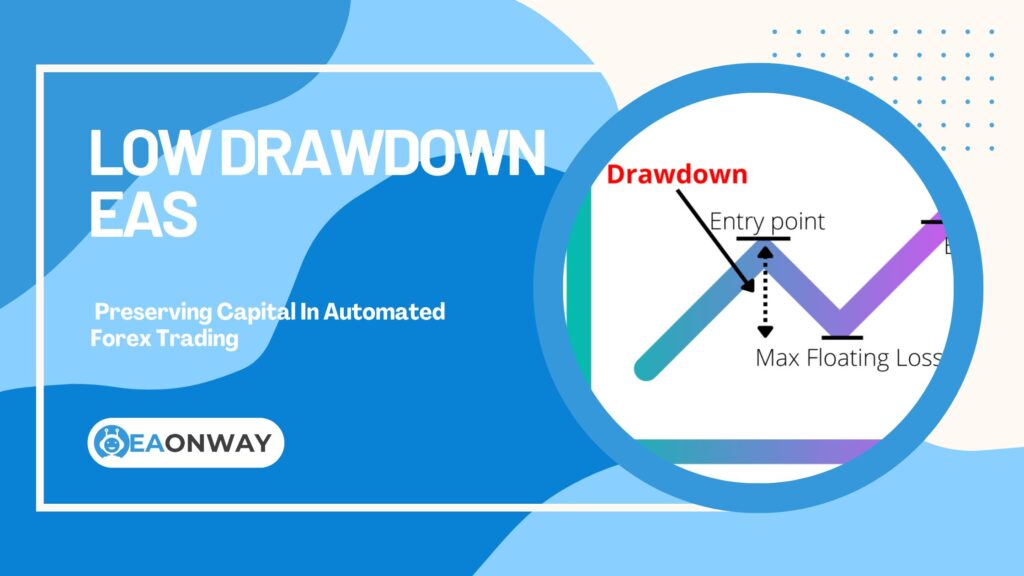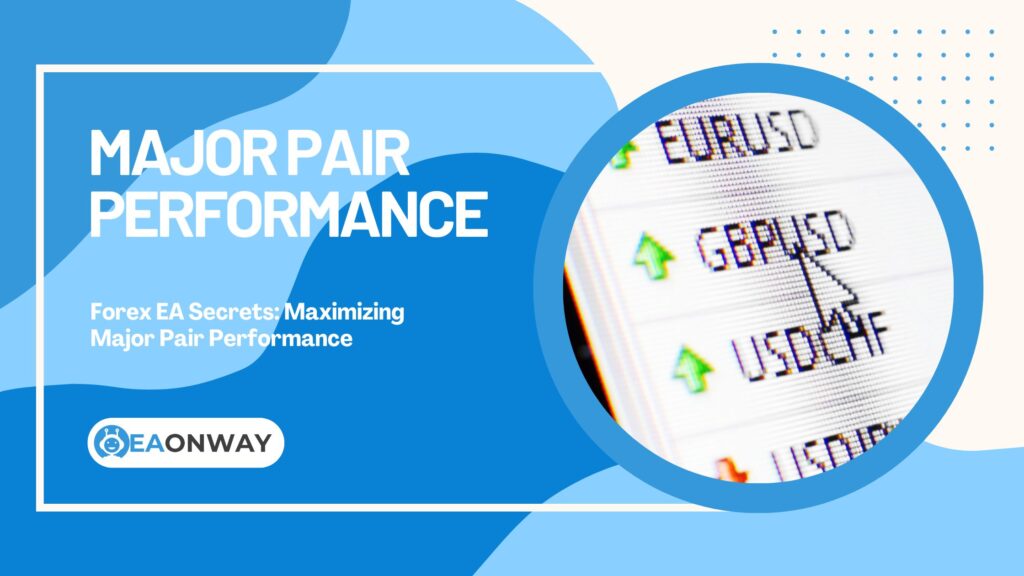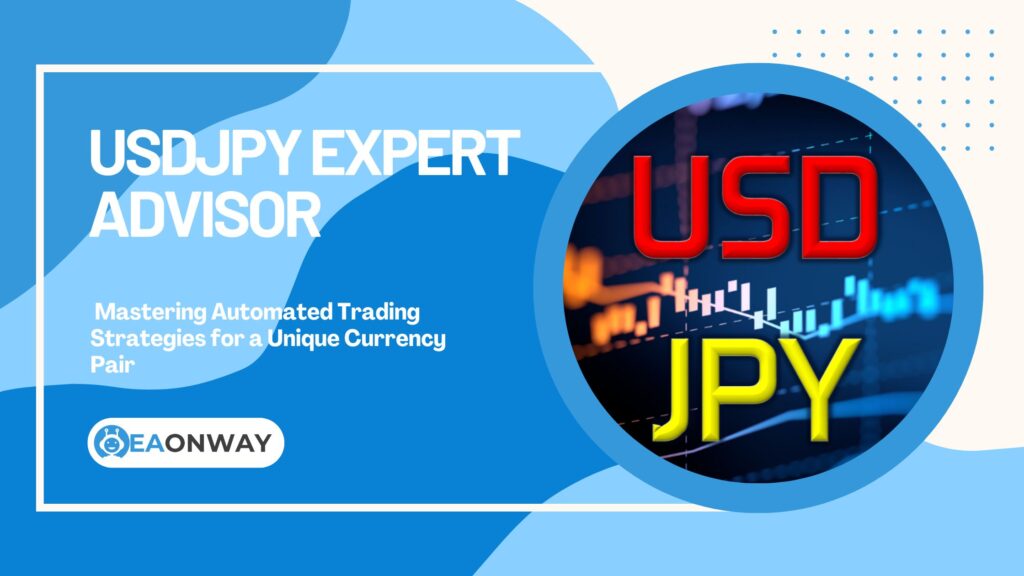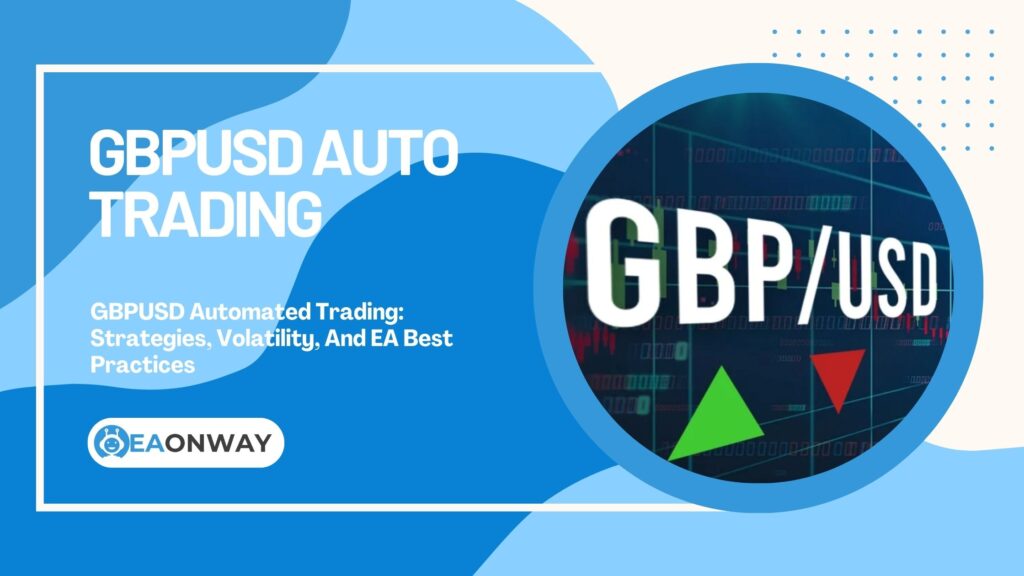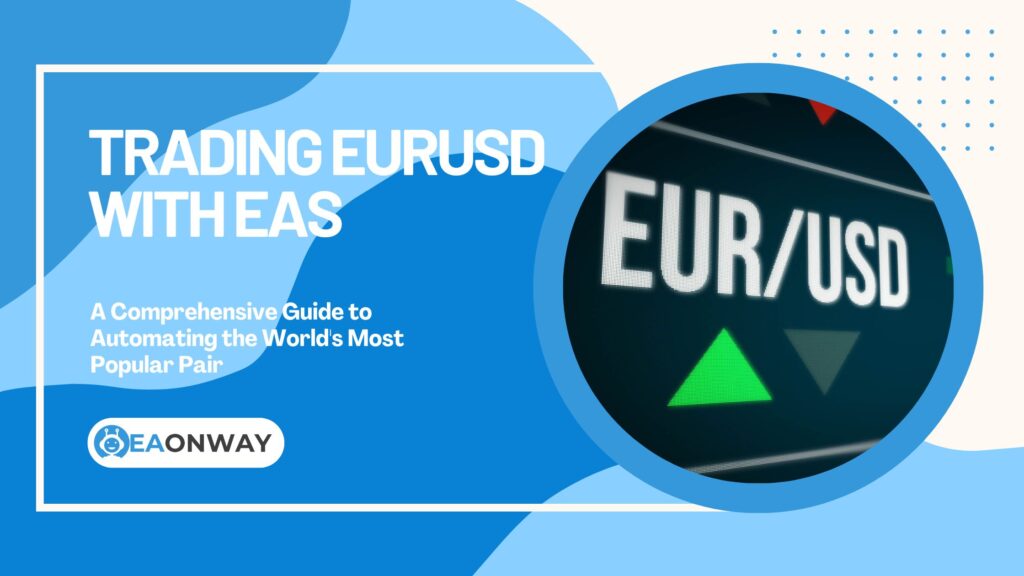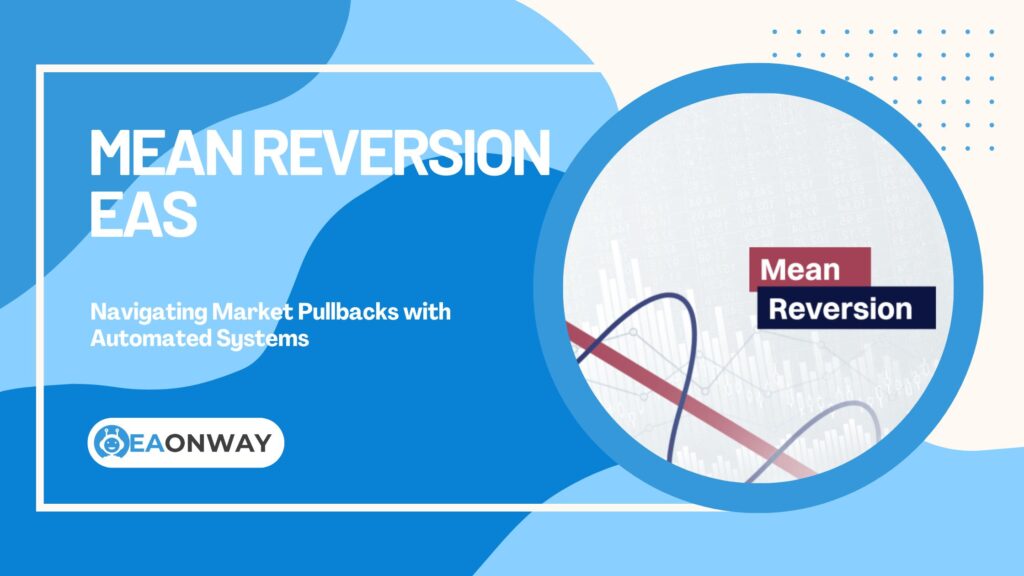Common EA Trading Strategies
Verified EA Performance: Track Records And Audits Explained
Verified EA Performance: Track Records And Audits Explained
The allure of automated Forex trading, often powered by Expert Advisors (EAs), can be strong, promising hands-off market participation. However, understanding Verified EA Performance and the critical role of Expert Advisor Track Records and Third-Party EA Audits is paramount before even considering such tools. Are the dazzling profit claims you see truly achievable, or are they a carefully constructed illusion? This journey into EA performance verification aims to equip you with the knowledge to distinguish credible systems from potential pitfalls, focusing on realistic expectations and rigorous due diligence. This article delves into the essential components of assessing an EA’s past performance, why independent verification is non-negotiable, and how to interpret the data to make informed decisions, always remembering the inherent risks of the Forex market.
Key Takeaways: Navigating Forex EA Performance Verification
- Verified performance is crucial: Always prioritize EAs with performance data validated by independent, reputable third-party services. Unverified claims are often misleading.
- Track records tell a story: An EA’s track record, especially a live one, provides insights into its historical behavior, but it’s not a crystal ball for future results.
- Third-party audits build trust: Services like Myfxbook or FXBlue offer a layer of Automated Trading Verification by connecting directly to broker accounts, reducing the chance of falsified results.
- Metrics matter, but context is key: Understand key performance indicators like drawdown, profit factor, and trade frequency, but analyze them within the broader context of strategy and market conditions.
- Backtesting has severe limitations: While useful for initial strategy testing, backtests often don’t reflect real-world trading conditions like slippage, latency, or changing market dynamics. Live Trading Results are more telling.
- Broker impact is real: The choice of broker, their execution quality, spreads, and commissions can significantly affect an EA’s real-world performance compared to idealized backtests or even results on another broker.
- Due diligence is non-negotiable: No EA is a “set and forget” solution. Ongoing monitoring, understanding the strategy, and robust Risk Management Automated Trading practices are essential.
- Beware of unrealistic promises: If an EA promises guaranteed high returns with little to no risk, it’s a major red flag. EA Scam Avoidance starts with skepticism towards such claims.
What is Verified EA Performance and Why Does It Matter?
Navigating the world of Forex Expert Advisors (EAs) requires a keen eye for detail, especially when it comes to their purported success. The concept of “verified performance” stands as a cornerstone in assessing the potential viability and credibility of any automated trading system.
What Exactly is Verified EA Performance?
Verified EA performance refers to trading results that have been authenticated and tracked by an independent, reputable third-party service, not just by the EA vendor. This verification process typically involves the third-party service connecting directly to the EA’s trading account with a broker, using investor (read-only) passwords to monitor and record trading activity live and ongoing. This ensures the data is transparent and less susceptible to manipulation.
The primary goal of such Automated Trading Verification is to provide an objective view of how an EA has performed in a real or, at least, independently monitored trading environment. This stands in stark contrast to vendor-supplied spreadsheets or screenshots, which can be easily fabricated or selectively presented.
Why is Verifying EA Performance Crucial for Traders?
Verifying EA performance is absolutely crucial because it helps traders cut through marketing hype and assess an EA’s historical results with a greater degree of confidence. The Forex market is complex and fraught with risks; relying on unverified claims can lead to significant financial loss and disappointment. Independent verification provides a layer of Trading Robot Credibility.
Here’s why it’s so important:
- Transparency: It offers a transparent look at the EA’s trading history, including wins, losses, drawdown, and other vital statistics.
- Objectivity: An independent verifier has no vested interest in promoting the EA, offering a more unbiased perspective than the EA seller.
- Risk Assessment: Verified data, especially on live accounts, helps in understanding the potential risks associated with the EA, such as maximum drawdown experienced.
- Informed Decisions: It empowers traders to make more informed decisions rather than relying on faith or persuasive sales copy. Many retail traders unfortunately enter the market with unrealistic expectations, and regulators often warn about the risks involved in Forex and CFD trading. For instance, regulatory bodies like the European Securities and Markets Authority (ESMA) have previously implemented measures concerning CFDs due to high percentages of retail client accounts losing money (Source: ESMA Public Statement Archives).
The Dangers of Unverified EA Performance Claims
Relying on unverified EA performance claims is akin to navigating a minefield blindfolded. The Forex market attracts many hopeful traders, and unfortunately, also unscrupulous vendors looking to exploit this interest. Unverified claims can be dangerously misleading and often hide poor performance or outright scams.
Consider these dangers:
- Fabricated Results: Vendors can easily create spreadsheets showing impressive, but entirely fake, profit curves.
- Cherry-Picked Data: Only successful periods might be shown, conveniently omitting significant losing streaks or periods of high drawdown.
- Optimized Backtests Presented as Live Results: Highly optimized backtests, which look good on paper but fail in live markets, can be deceptively marketed.
- Ignoring Broker Conditions: Results might be from demo accounts with ideal conditions (no slippage, low spreads) that don’t reflect live trading realities.
- False Sense of Security: Believing unverified claims can lead to investing in a failing system, resulting in substantial financial losses. The prevalence of such risks is why authorities like the U.S. Commodity Futures Trading Commission (CFTC) issue investor advisories regarding Forex fraud and automated trading systems (Source: CFTC Customer Protection – Forex Fraud Advisory).
Engaging in Algorithmic Trading Due Diligence by insisting on verified performance is a fundamental step in protecting your capital and making sounder trading choices.
Decoding the Expert Advisor Track Record
An Expert Advisor Track Record is one of the first pieces of evidence a trader will examine when considering an EA. However, simply glancing at a profit graph isn’t enough. Understanding how to read and interpret these records is vital for a realistic assessment.
What is an EA Track Record?
An EA track record, also known as performance history, is a detailed log of all trades executed by an Expert Advisor on a specific trading account over a period. This record should ideally showcase various metrics like profit/loss per trade, cumulative profit, equity curve, drawdown, and trading frequency, providing a historical overview of the EA’s behavior and outcomes.
A comprehensive track record aims to give potential users an insight into the EA’s trading style, consistency, and risk profile based on its past operations. The most valuable track records are those from live trading accounts, verified by independent third-party services, as these reflect real market conditions more accurately than demo accounts or unverified statements.
How to Read a Forex EA Track Record Effectively?
Reading a Forex EA Performance History effectively means going beyond the headline profit number. You need to dissect the data to understand the story it tells about the EA’s behavior, risk, and consistency.
Here’s a systematic approach:
- Verify the Source: Is the track record hosted on a reputable third-party platform like Myfxbook or FXBlue? Ensure it’s a live, verified account, not a demo or a manually uploaded statement. Look for the “verified track record” and “verified trading privileges” badges.
- Check Account Longevity: How long has the account been running? A few weeks or months of good performance can be luck. Look for records spanning at least 6-12 months, preferably longer, to see how the EA performed through various market conditions.
- Analyze the Equity Curve: Is the growth steady and consistent, or erratic with sharp peaks and deep troughs? A smooth, upward-sloping curve is generally preferred, though some volatility is normal.
- Examine Drawdown: This is a critical risk indicator. Note the maximum drawdown (the largest peak-to-trough decline in account equity). Would you be comfortable with such a loss?
- Assess Profit Factor and Win Rate: A high win rate isn’t always good if the average loss is much larger than the average win. The profit factor (gross profit divided by gross loss) gives a better idea of profitability.
- Look at Trade Frequency and Holding Time: Does the EA trade frequently (scalper) or infrequently (swing/position trader)? How long are trades typically held? This helps understand if the strategy aligns with your expectations and broker conditions (e.g., scalping is sensitive to spreads).
- Check for Consistency: Are there long flat periods or sudden massive gains that skew the overall picture? Consistent, albeit perhaps smaller, gains are often more sustainable.
- Note the Broker: The broker used can impact results. If you plan to use a different broker, performance may vary.
- Scrutinize for Red Flags: Extremely high leverage, martingale or grid strategies (often visible through increasing lot sizes after losses or many open trades in drawdown), or unusually long periods without closing trades can be warning signs.
Key Metrics to Scrutinize in an EA Performance History
When evaluating an EA’s performance history, several key metrics provide deeper insights than just the total profit. Understanding these figures is essential for a comprehensive EA Performance Metrics analysis.
- Total Gain / Absolute Gain:
- What it is: Total gain shows the percentage increase relative to the initial deposit. Absolute gain shows the percentage increase relative to the starting balance at the beginning of the tracked period.
- Why it matters: While a high gain is attractive, it must be weighed against risk (drawdown) and time. A 100% gain in a year with 5% drawdown is very different from a 100% gain in a month with 60% drawdown.
- Drawdown (Maximal, Average, Current):
- What it is: Drawdown EA metrics measure the reduction in account equity from a peak to a subsequent trough. Maximal drawdown is the largest single drop experienced. Average drawdown can also be insightful. Current drawdown shows if the EA is presently in a losing phase.
- Why it matters: This is arguably the most critical risk indicator. It tells you how much of your capital could have been lost during the EA’s worst period. You must be comfortable with this level of potential loss. A high drawdown can lead to a margin call or significant emotional stress.
- Profit Factor EA:
- What it is: The Profit Factor EA is calculated by dividing the gross profit (sum of all winning trades) by the gross loss (sum of all losing trades).
- Why it matters: A profit factor above 1 means the EA is profitable. For example, a profit factor of 1.5 means for every $1 lost, $1.50 was gained. Higher is generally better, but extremely high profit factors (e.g., above 3-4) over long periods can sometimes be suspicious or indicative of a very specific, possibly non-sustainable, market condition.
- Win Rate vs. Risk-Reward Ratio:
- What it is: Win rate is the percentage of trades that were profitable. The risk-reward ratio compares the average profit of winning trades to the average loss of losing trades.
- Why it matters: A high win rate (e.g., 80%) might seem good, but if the average loss is five times the average win, the EA could still be unprofitable. Conversely, an EA with a 40% win rate can be very profitable if its average win is three times its average loss. Understanding this balance is key.
- Trading Frequency and Duration:
- What it is: How many trades does the EA make per day/week/month? How long are trades typically held open (seconds, minutes, hours, days)?
- Why it matters: High-frequency trading (scalping) can be very sensitive to broker spreads, commissions, and execution speed. Longer-term strategies might be less affected but could tie up margin for extended periods. Ensure the trading style fits your broker and risk tolerance.
- Account Type (Demo vs. Live):
- What it is: Was the track record generated on a demo account or a real, live-money trading account?
- Why it matters: Live Trading Results are far more credible. Demo accounts often have ideal execution, no slippage, and don’t involve real emotional pressure. Performance can differ significantly between demo and live environments. Always prioritize live, verified results.
What Are the Common Pitfalls of Relying Solely on Vendor-Provided Track Records?
Relying solely on track records provided directly by an EA vendor, without independent verification, is a risky proposition. Vendors have an inherent bias to present their products in the best possible light.
Common pitfalls include:
- Lack of Independent Verification: This is the biggest pitfall. Without a service like Myfxbook Verified Performance or FXBlue Live Results, there’s no way to confirm the authenticity of the data.
- Selective Reporting: Vendors might only show results from a specific successful period, omitting losing streaks or periods of high drawdown.
- Optimized Backtests Masquerading as Live Results: Stunning backtest results can be easily achieved by curve-fitting data to past market conditions. These often fail miserably in live trading.
- Demo Account Discrepancies: Results from demo accounts can be significantly better than live results due to perfect fills, no slippage, and different spread/commission structures.
- Hidden High-Risk Strategies: Some EAs use dangerous strategies like martingale or aggressive grid systems that can show smooth equity curves for a while before a catastrophic loss. Vendor-provided records might not clearly highlight these underlying risks.
- Broker Dependency: The record might be from a broker with unusually favorable conditions that are not widely available or sustainable.
- Short History: A vendor might showcase a very short period of stellar performance, which isn’t representative of long-term viability.
Always demand Performance Transparency and insist on long-term, live, independently verified track records.
The Role of Third-Party Audits in EA Validation
While a detailed track record is essential, its credibility skyrockets when subjected to a third-party audit. These independent verification services play a pivotal role in fostering trust and transparency in the EA marketplace.
What is a Third-Party Audit for EAs?
A third-Party EA audit is an independent verification process where a reputable external service connects to an EA’s trading account (usually via a read-only investor password) to track, analyze, and publicly display its performance. This service acts as an impartial observer, collecting data directly from the broker’s server, which minimizes the possibility of result manipulation by the EA vendor.
The core purpose of such an audit is to provide an unbiased, verifiable statement of an EA’s historical trading activity. This allows potential users to assess the Trading Robot Credibility based on data that hasn’t been curated or potentially altered by the seller.
Why are Independent Verification Services Essential for EA Credibility?
Independent Verification Services are absolutely essential for establishing EA credibility because they introduce a layer of objectivity and trust that self-reported results can never achieve. Without them, the EA market would be rife with unverifiable claims and misleading marketing.
Here’s why they are indispensable:
- Reduces Fraud: They significantly deter vendors from presenting falsified or heavily manipulated performance data.
- Standardized Reporting: Services like Myfxbook or FXBlue offer standardized metrics and presentation, making it easier to compare different EAs.
- Builds Trust: When an EA developer voluntarily submits their system for third-party auditing, it signals a degree of confidence in their product and a commitment to transparency.
- Provides Deeper Insights: These platforms often provide more analytical tools and detailed statistics than a simple vendor statement, allowing for more thorough Algorithmic Trading Due Diligence.
- Community Scrutiny: Publicly audited results can be scrutinized by a wider community of traders, who may spot anomalies or risks that an individual might miss. According to the International Organization of Securities Commissions (IOSCO), investor education and transparency are key components in protecting investors in complex markets (Source: IOSCO Principles for Investor Education). Third-party audits contribute directly to this transparency.
How Do Services Like Myfxbook and FXBlue Verify EA Results?
Services like Myfxbook and FXBlue are prominent Independent Verification Services that verify EA results through a systematic process:
- Direct Broker Connection: The EA user (or vendor) provides the platform with their trading account number and a read-only investor password for their MetaTrader 4 (MT4) or MetaTrader 5 (MT5) account (or other supported platforms).
- Data Synchronization: The platform connects directly to the broker’s server and synchronizes the complete trading history of the account. This includes open trades, pending orders, and historical transactions.
- Continuous Monitoring: Once connected, the service continuously (or at frequent intervals) updates the trading activity, reflecting new trades, closed trades, and changes in equity.
- Calculation of Metrics: The platform automatically calculates a wide range of performance metrics, such as gain, drawdown, profit factor, average win/loss, trade duration, etc.
- Verification Badges:
- Track Record Verified: This badge usually confirms that the platform has successfully connected to the account and is pulling data directly from the server, ensuring the historical data is consistent with the broker’s records.
- Trading Privileges Verified: This more stringent verification confirms that the account owner has proven they have control over the trading account (e.g., by placing a specific comment in a trade or making a small deposit). This helps prevent someone from tracking an account that isn’t theirs.
- Public (or Private) Display: The verified performance data is then displayed on a dedicated page, which can be made public by the account owner. Myfxbook Verified Performance and FXBlue Live Results pages are commonly shared by EA vendors.
This automated and direct-from-broker approach is what gives these services their credibility.
What Information Should a Reputable Third-Party Audit Provide?
A reputable third-party audit should provide a comprehensive and transparent overview of the EA’s trading performance. Key information includes:
- Clear Verification Status: Prominent display of “Track Record Verified” and “Trading Privileges Verified” badges.
- Account Details: Broker name, account type (Live/Demo), leverage used, initial deposit.
- Core Performance Metrics:
- Gain (Total, Absolute, Daily, Monthly, Yearly)
- Drawdown (Maximal, Current)
- Profit Factor
- Total Net Profit
- Number of Trades
- Win Rate (%)
- Average Win / Average Loss
- Average Trade Length
- Graphical Representations:
- Equity/Balance Curve (chart showing growth over time)
- Drawdown Chart
- Distribution of profits by month, year, currency pair.
- Detailed Trade History: A list of individual trades (can sometimes be hidden or delayed by the owner for proprietary reasons, but key overall stats should still be based on them).
- Risk Metrics: Besides drawdown, information like Sharpe ratio (if available), Z-score, or other statistical measures of risk and consistency.
- Open Trades: Current open positions, their P/L, and duration.
- Updates and Timeliness: Clear indication of when the data was last updated.
The more comprehensive and transparent the data, the better. Performance Transparency is a hallmark of a reliable audit.
Are There Limitations to Third-Party EA Audits?
Yes, while third-party audits are invaluable, they are not a foolproof guarantee of future success or a complete shield against all risks. Understanding their limitations is crucial:
- Past Performance is Not Indicative of Future Results: This is the most fundamental limitation. An EA that performed well historically may not continue to do so due to changing market conditions, strategy degradation, or other unforeseen factors.
- Broker Specificity: Performance can vary significantly between brokers due to differences in spreads, commissions, slippage, and execution speed. An audit on one broker doesn’t guarantee identical results on another. This Broker Execution Impact is a real concern.
- Account Management: The audit reflects the EA’s performance on a specific account with specific settings and risk management. If a user changes these parameters, their results will differ.
- Short Track Records: An audit of an account with only a few months of history is less reliable than one with several years of data.
- “Black Box” Nature: While the results are audited, the underlying strategy of the EA often remains a secret. Users may not fully understand why or how the EA makes its decisions.
- Potential for System Hopping: Some vendors might run many EAs and only showcase the few that happen to perform well by luck, discontinuing the losers. A long, consistent track record helps mitigate this.
- Not an Endorsement: Verification services audit the data; they do not endorse the EA itself or its suitability for any particular trader.
- Not Immune to All Deception: While rare with reputable services, extremely sophisticated users might find ways to game systems, though “Trading Privileges Verified” significantly reduces this.
Despite these limitations, a verified third-party audit remains one of the most reliable tools for initial EA assessment. It should be one part of a broader due diligence process.
Beyond the Numbers: Critical Factors in Assessing EA Performance
While verified track records and key metrics are foundational, a truly thorough assessment of an EA’s potential requires looking beyond the raw numbers. Several contextual and practical factors significantly influence real-world outcomes.
Understanding Backtesting Limitations: Why Past Results Don’t Guarantee Future Success
Backtesting Limitations are a significant reason why EAs that look phenomenal on paper can fail spectacularly in live trading. Backtesting involves running an EA’s logic on historical price data to see how it would have performed.
Here’s why past (backtested) results don’t guarantee future success:
- Curve Fitting/Over-Optimization: It’s easy to tailor an EA’s parameters to perform exceptionally well on a specific historical dataset. This “curve-fitted” strategy often lacks robustness and fails when market conditions change even slightly.
- Ignoring Real-World Trading Conditions:
- Spreads: Backtests might use fixed or unrealistically low spreads, while live spreads vary and can widen significantly during news events.
- Slippage: In live trading, especially during volatile periods or with large orders, the price at which a trade is executed can differ from the requested price. Backtests rarely model this accurately.
- Commissions: Broker commissions are often overlooked or inaccurately modeled in backtests.
- Latency: Delays in order execution (latency) are not typically simulated in backtests.
- Data Quality Issues: Historical data used for backtesting might contain errors, gaps, or inaccuracies, leading to misleading results.
- Inability to Adapt: Most EAs are programmed with fixed rules. Markets, however, are dynamic and evolving. An EA optimized for past trending conditions might fail in a ranging market, and vice-versa.
- Psychological Factor Ignored: Backtests don’t account for the trader’s psychological response to drawdowns or winning streaks, which can lead to manual intervention that deviates from the EA’s intended operation.
While backtesting is a useful first step for strategy development and identifying glaring flaws, Live Trading Results, especially those verified by third parties, provide a much more realistic picture of an EA’s potential.
How Does Broker Execution Impact Live Trading Results?
The Broker Execution Impact on an EA’s live trading results can be profound and is often underestimated. An EA might perform well with one broker but poorly with another, even if the underlying strategy is identical.
Key factors related to broker execution include:
- Spreads: The difference between the bid and ask price. EAs that trade frequently (scalpers) are highly sensitive to spread variations. Wider spreads directly eat into profits.
- Commissions: Some brokers charge a per-trade commission. This needs to be factored into the EA’s profitability, especially for high-frequency strategies.
- Slippage:
- Negative Slippage: When your order is filled at a worse price than requested. This is common in fast-moving markets or for large orders.
- Positive Slippage: When your order is filled at a better price. Less common but possible.
Frequent negative slippage can decimate an EA’s edge.
- Order Execution Speed (Latency): The time it takes for your broker to execute your order after the EA sends it. High latency can lead to significant slippage, especially for EAs relying on precise entry and exit points.
- Execution Model (Dealing Desk vs. No Dealing Desk – ECN/STP):
- Dealing Desk (Market Maker): The broker may trade against you. Potential for conflict of interest.
- ECN/STP (No Dealing Desk): Orders are passed directly to liquidity providers. Generally preferred for transparency, though not immune to execution issues.
- Requotes: When a broker is unable to fill your order at the requested price and offers a new price. Frequent requotes can disrupt an EA’s operation.
- Server Stability and Uptime: Frequent server disconnections from the broker can cause missed trades or mismanagement of open positions.
It’s vital to test an EA on a demo account with your chosen broker first, and then with a small live account, to observe how these execution factors affect its performance before committing significant capital.
The Importance of Performance Transparency from EA Providers
Performance Transparency from EA providers is a cornerstone of trust and ethical business practice. Traders should be wary of vendors who are opaque about their systems or performance.
Transparency encompasses:
- Verified Track Records: Willingness to provide long-term, live, and independently verified track records (e.g., via Myfxbook, FXBlue).
- Clear Strategy Explanation (to a reasonable degree): While proprietary details may be kept secret, vendors should provide a general overview of the EA’s trading logic (e.g., trend-following, mean-reversion, breakout), the markets it trades, and its typical trading frequency. This helps users understand if the EA aligns with their risk appetite and market outlook.
- Openness About Risks: Honest disclosure of potential drawdowns, limitations of the EA, and the fact that past performance doesn’t guarantee future results.
- Information on Optimal Settings: Guidance on recommended settings, lot sizing, and risk management parameters.
- No Hype or Unrealistic Promises: Avoiding claims of “guaranteed profits” or “no-loss” systems. Such statements are major red flags.
- Accessible Support: Providing clear channels for customer support and addressing queries honestly.
Lack of transparency is often a sign that a vendor has something to hide. Prioritize EAs from providers who are open and upfront.
How Can Algorithmic Trading Due Diligence Help in EA Selection?
Thorough Algorithmic Trading Due Diligence is a systematic process of investigation and analysis before committing to an EA. It’s about making an informed decision rather than an impulsive one.
Key steps in due diligence include:
- Verify Performance: Insist on independently verified live track records spanning a significant period (ideally 12+ months). Scrutinize all key metrics.
- Understand the Strategy: Learn as much as possible about the EA’s trading logic, even if it’s a general overview. Does it use high-risk methods like martingale or grid trading?
- Assess Risk vs. Reward: Don’t just look at profits. Understand the maximum drawdown, profit factor, and risk-reward ratio per trade. Are you comfortable with the potential losses?
- Check Vendor Reputation: Research the EA vendor. Look for reviews (be wary of overly positive, fake reviews), forum discussions, and their overall presence in the trading community.
- Evaluate Backtests Critically: If backtests are provided, look for signs of curve-fitting. Ask for out-of-sample tests or forward tests.
- Consider Broker Compatibility: Ensure the EA is compatible with your broker and that its strategy isn’t overly sensitive to execution variables your broker might struggle with.
- Start Small (Demo/Micro Account): Test the EA on a demo account with your chosen broker, then with a small amount of real money on a micro or cent account before scaling up. This helps you observe its live behavior and Broker Execution Impact.
- Read the Fine Print: Understand the terms of purchase, refund policies (if any), and support offered.
- Be Skeptical of Guarantees: Remember, there are no guarantees in trading. Any EA promising guaranteed profits is likely a scam.
Diligent research and a cautious approach can significantly improve your chances of finding a more Reliable Forex Robot, or at least, avoiding detrimental ones.
Red Flags and Risk Management in Automated Trading
Even with verified performance and due diligence, using Forex EAs involves inherent risks. Recognizing red flags and implementing robust risk management are crucial for navigating the automated trading landscape safely.
Common EA Scams and How to Avoid Them
The EA market, unfortunately, has its share of scams. EA Scam Avoidance requires vigilance and a healthy dose of skepticism.
Common red flags and scam tactics include:
- Guaranteed High Returns: Any promise of “guaranteed,” “risk-free,” or extraordinarily high monthly returns (e.g., 50-100%+ per month consistently) is almost certainly a scam. Forex trading is inherently risky, and no EA can eliminate that risk.
- Perfect, Unverified Track Records: Vendors showcasing flawless equity curves or spreadsheets without independent third-party verification (like Myfxbook Verified Performance) are highly suspect. These can be easily fabricated.
- Excessive Hype and Pressure Tactics: High-pressure sales tactics, limited-time offers designed to make you buy impulsively, and overly aggressive marketing language.
- Lack of Transparency: Refusal to provide details about the trading strategy (even general principles), vague answers to questions, or no clear contact information.
- Focus on Sales, Not Support: Vendors who are very responsive before a sale but disappear or become unhelpful afterward.
- Use of Martingale/Grid Systems Without Full Disclosure: These strategies can look good for a while by averaging down or adding to losing positions, but they carry a high risk of catastrophic loss. Vendors may not fully disclose the risks.
- Fake Reviews and Testimonials: Be wary of websites filled with glowing, generic testimonials without verifiable sources.
- Requests for Direct Account Management or High Upfront Fees for “Signal Services” Tied to a Specific EA: While some EAs are sold, be cautious of services demanding large sums for signals or managed accounts with unproven EAs.
How to Avoid Them:
- Prioritize Independent Verification: Always look for Third-Party EA Audits.
- Be Realistic: Understand that consistent, moderate gains with managed risk are more plausible than get-rich-quick schemes.
- Do Your Research: Look for independent reviews and discussions on reputable forums.
- Ask Questions: Don’t hesitate to ask vendors tough questions about their strategy and risk management.
- Start Small: If you decide to try an EA, test it with capital you can afford to lose.
Why is Robust Risk Management Crucial When Using Forex Robots?
Robust Risk Management Automated Trading is not just important; it’s absolutely critical when using Forex robots. Even the best EA can experience losing streaks or encounter unexpected market conditions. Without proper risk controls, you could lose a significant portion, or all, of your trading capital.
Here’s why it’s crucial:
- Capital Preservation: The primary goal of risk management is to protect your trading capital. An EA might generate profits, but if it exposes your account to excessive risk, one bad run could wipe you out.
- Limiting Drawdowns: Proper position sizing and stop-loss orders (either managed by the EA or set at the account level) help limit the extent of drawdowns during losing periods.
- Preventing Catastrophic Losses: Some EAs might employ risky strategies (e.g., martingale) that, without overarching risk limits, can lead to margin calls.
- Emotional Control: Predetermined risk parameters help remove emotional decision-making during live trading. The EA operates within these limits, and you know your maximum exposure per trade or per day.
- Long-Term Sustainability: Consistent application of risk management rules is key to surviving in the markets long enough for a potentially profitable EA to deliver results.
- Adapting to EA Behavior: Even if an EA has internal risk settings, you should also implement your own account-level risk management (e.g., maximum daily loss, maximum overall drawdown you’re willing to tolerate before stopping the EA).
Never rely solely on an EA’s advertised “built-in” risk management. Always understand it and supplement it with your own capital protection rules.
Can You Rely on a “Reliable Forex Robot” Without Your Own Due Diligence?
No, you absolutely cannot rely on any “reliable Forex robot” – no matter how well-marketed or seemingly well-performing – without conducting your own thorough due diligence. The term “reliable” can be subjective and is often used loosely in marketing.
Here’s why:
- “Reliable” is Relative and Past-Focused: An EA might have been reliable in specific past market conditions. Those conditions can change, impacting future reliability.
- Vendor Bias: The vendor will always present their EA as reliable. Your due diligence provides an objective counter-assessment.
- Hidden Risks: Even EAs with good track records might have underlying risks not immediately apparent (e.g., sensitivity to specific news events, reliance on particular broker conditions).
- No “Set and Forget” Solution: The Forex market is dynamic. No EA is a truly “set and forget” solution that guarantees perpetual profits without oversight. Monitoring and occasional adjustments (or knowing when to stop using it) are necessary.
- Your Responsibility: Ultimately, you are responsible for the capital you invest. Delegating this responsibility entirely to a piece of software without understanding it is a recipe for potential disaster. The Financial Industry Regulatory Authority (FINRA) in the US, for example, often emphasizes investor responsibility in understanding investments (Source: FINRA Investor Education Resources). This principle applies equally to automated trading tools.
Your due diligence – verifying performance, understanding the strategy, assessing risks, and testing – is your best defense against misleading claims and your best tool for making an informed decision.
Setting Realistic Expectations: Understanding the Risks of EAs
Setting realistic expectations is paramount when approaching Forex EAs. The allure of automated profits can easily lead to disappointment if one is not grounded in the realities and risks of the market.
Key aspects of setting realistic expectations:
- No Holy Grail: There is no EA that wins all the time or guarantees profits. Losses are a normal part of trading.
- Profits are Not Guaranteed: Past performance, even if verified, does not guarantee future results. Market conditions change, and EAs can stop performing as they did previously.
- Drawdowns Will Occur: Expect periods where the EA loses money and your account equity declines. Understand the EA’s historical maximum drawdown and be prepared to endure similar or potentially worse drawdowns.
- EAs are Tools, Not Magic Wands: An EA is a tool that automates a specific trading strategy. It doesn’t possess market foresight. Its success depends on the robustness of its strategy and prevailing market conditions.
- Time and Patience are Required: Profitable trading, even with EAs, is usually a long-term endeavor. Don’t expect to get rich quickly.
- Ongoing Monitoring is Necessary: You can’t just switch on an EA and forget about it. Regular monitoring of its performance and market conditions is essential.
- Understand the Risks of Forex Trading Itself: EAs operate in the Forex market, which is inherently volatile and carries substantial risk. The Bank for International Settlements (BIS) Triennial Central Bank Survey highlights the vast scale of the Forex market, but also implies its complexity and the professional nature of many participants (Source: BIS Triennial Central Bank Survey of Foreign Exchange and OTC Derivatives Markets). Retail traders using EAs are competing in this environment. Multiple regional regulators like the UK FCA and ESMA have consistently reported that 70-80% of retail CFD and Forex accounts lose money (Sources: FCA CFD and binary options, ESMA Press Statement Archive).
- Factor in Costs: Consider the cost of the EA itself, VPS hosting (if needed), and potential broker commissions/spreads, which will affect net profitability.
By approaching EAs with realistic expectations and a clear understanding of the associated risks, traders are better positioned to use these tools responsibly and avoid costly mistakes driven by false hopes.
Final Thoughts on Verified EA Performance
Understanding and prioritizing Verified EA Performance is not just a recommendation; it’s a fundamental necessity for anyone considering the use of Expert Advisors in Forex trading. The journey through track records, third-party audits, and critical performance metrics is about arming yourself with knowledge to cut through the noise and make informed, cautious decisions. Remember that even the most thoroughly vetted EA operates within the highly unpredictable and risky Forex market.
The core message is one of diligence and realism. An Expert Advisor Track Record, especially one audited by services like Myfxbook or FXBlue, offers valuable historical insight, but it’s not a guarantee of future success. A Third-Party EA Audit provides crucial transparency and helps mitigate the risk of fabricated results, but it doesn’t eliminate market risk or the need for ongoing vigilance. Always scrutinize EA Performance Metrics, understand Backtesting Limitations, and be acutely aware of the potential Broker Execution Impact.
Ultimately, no EA can replace your own judgment and responsibility. Approach automated trading with a mindset focused on Risk Management Automated Trading, be relentless in your Algorithmic Trading Due Diligence, and maintain healthy skepticism towards any claims that sound too good to be true. The goal is not to find a mythical “perfect” EA, but to find a tool that, when understood and managed correctly, might complement a well-thought-out trading plan, always with a profound respect for the risks involved. Continuous learning and a cautious approach are your best allies in this complex domain.
Important Risk Warning
The information provided in this article by EaOnWay.com is for educational purposes only and should not be considered as financial or investment advice. Trading foreign exchange (Forex) on margin carries a high level of risk and may not be suitable for all individuals. Before deciding to trade Forex, you should carefully consider your investment objectives, level of experience, and risk appetite. The possibility exists that you could sustain a loss of some or all of your initial investment and therefore you should not invest money that you cannot afford to lose. Expert Advisors (EAs) are automated trading tools, and their past performance is not indicative of future results. There are inherent risks involved with using any automated trading system, including but not limited to, software errors, connectivity issues, and market volatility. EaOnWay.com does not sell EAs and does not guarantee the accuracy or completeness of any information presented. You are solely responsible for any trading decisions you make. We strongly advise you to seek independent financial advice from a qualified professional before engaging in any Forex trading activities.
-
Forex EA: A Beginner’s Guide To Low-Risk Systems
-
No DLL EA: Security, Portability, And Trust Benefits in Forex Trading
-
The Advantage of Forex EAs with Source Code: Unlocking Customization, Transparency, and Learning
-
Prop Firm Challenges: Using EAs For Success Guide
-
Low Drawdown EAs: Preserving Capital In Automated Forex Trading
-
Forex EA Secrets: Maximizing Major Pair Performance
-
Automated Index Trading: Unlocking Strategies With Expert Advisors
-
Gold Trading EAs Uncovered: Automating Your XAUUSD Strategy
-
USDJPY Expert Advisor: Mastering Automated Trading Strategies for a Unique Currency Pair
-
GBPUSD Automated Trading: Strategies, Volatility, And EA Best Practices
-
Trading EURUSD with Expert Advisors: A Comprehensive Guide to Automating the World’s Most Popular Pair
-
Mean Reversion EAs: Navigating Market Pullbacks with Automated Systems

